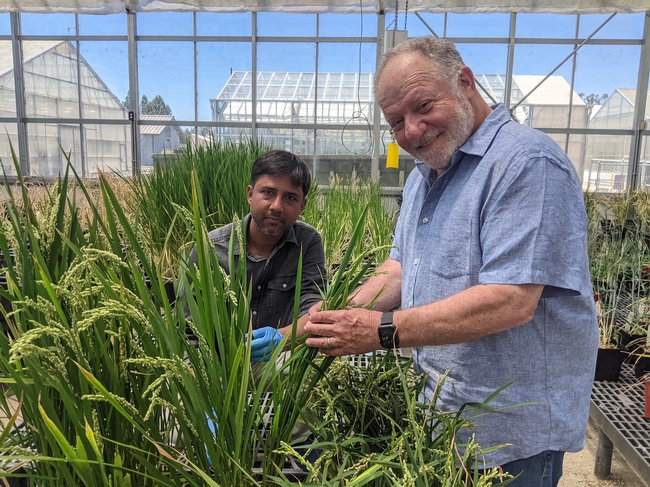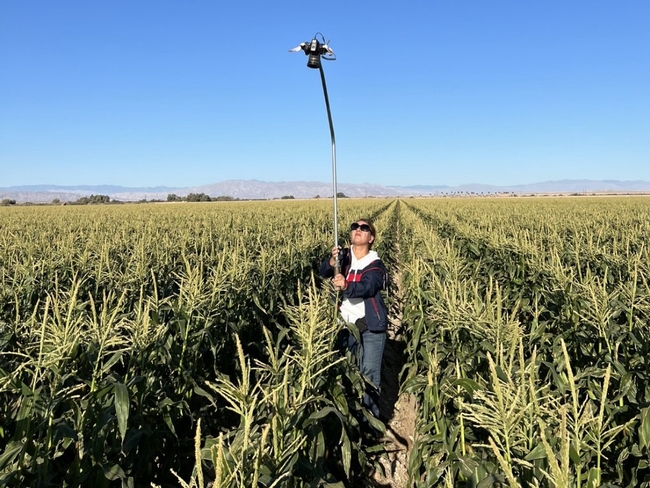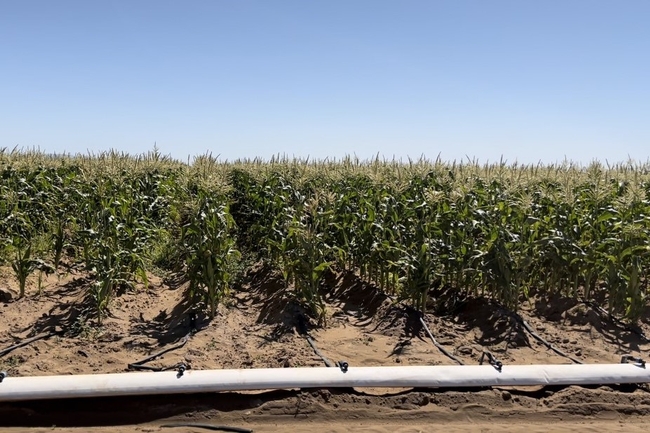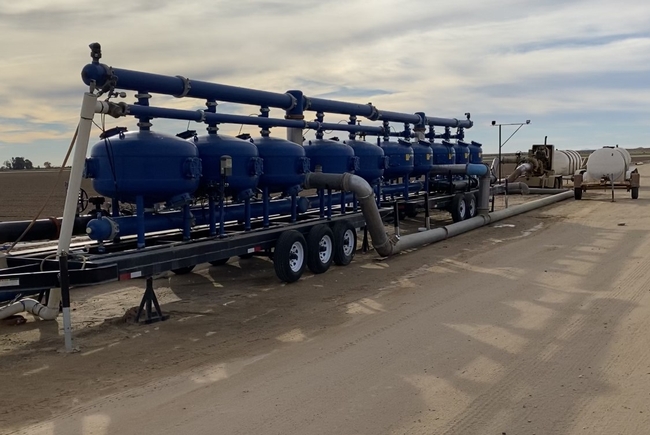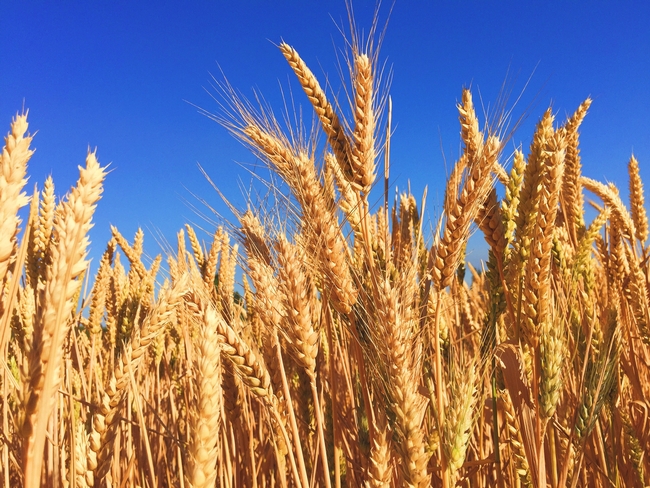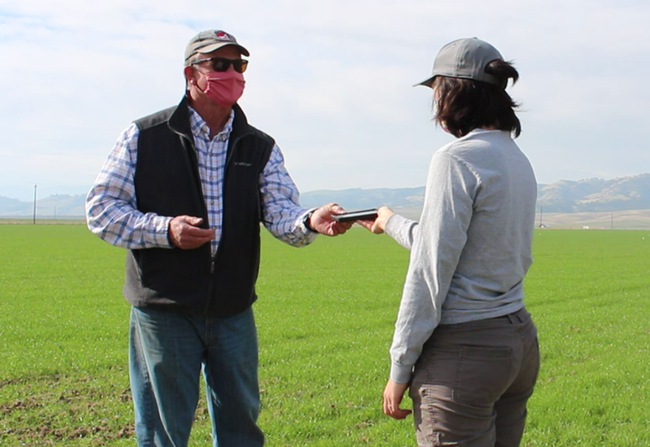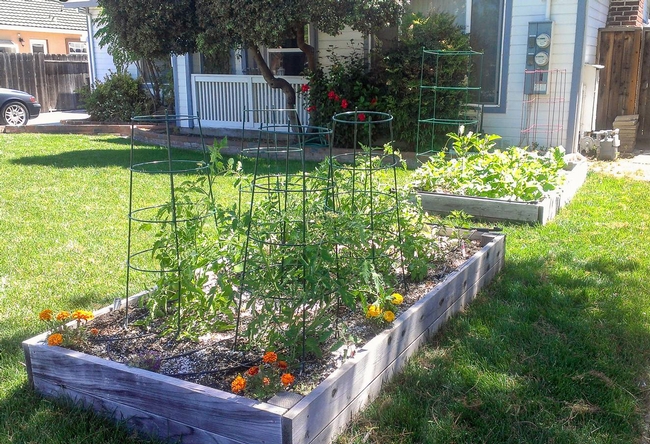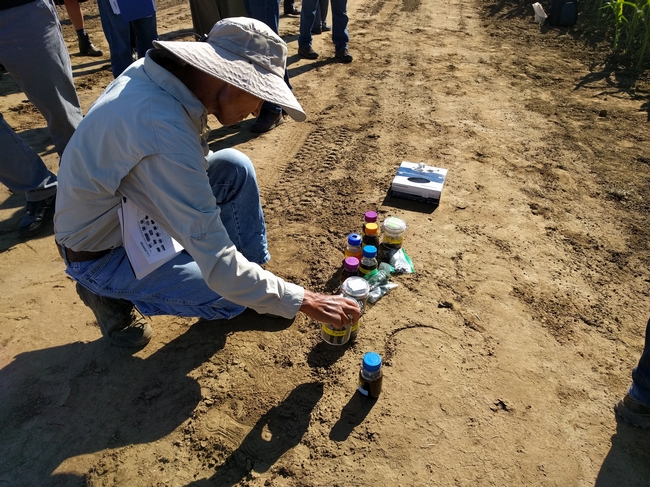Posts Tagged: fertilizer
Growing cereal crops with less fertilizer
Discovery could reduce nitrogen pollution, save farmers billions
Researchers at the University of California, Davis, have found a way to reduce the amount of nitrogen fertilizers needed to grow cereal crops. The discovery could save farmers in the United States billions of dollars annually in fertilizer costs while also benefiting the environment.
The research comes out of the lab of Eduardo Blumwald, a distinguished professor of plant sciences, who has found a new pathway for cereals to capture the nitrogen they need to grow.
The discovery could also help the environment by reducing nitrogen pollution, which can lead to contaminated water resources, increased greenhouse gas emissions and human health issues. The study was published in the journal Plant Biotechnology.
Nitrogen is key to plant growth, and agricultural operations depend on chemical fertilizers to increase productivity. But much of what is applied is lost, leaching into soils and groundwater. Blumwald's research could create a sustainable alternative.
“Nitrogen fertilizers are very, very expensive,” Blumwald said. “Anything you can do to eliminate that cost is important. The problem is money on one side, but there are also the harmful effects of nitrogen on the environment.”
A new pathway to natural fertilizer
Blumwald's research centers on increasing the conversion of nitrogen gas in the air into ammonium by soil bacteria — a process known as nitrogen fixation.
Legumes such as peanuts and soybeans have root nodules that can use nitrogen-fixing bacteria to provide ammonium to the plants. Cereal plants like rice and wheat don't have that capability and must rely on taking in inorganic nitrogen, such as ammonia and nitrate, from fertilizers in the soil.
“If a plant can produce chemicals that make soil bacteria fix atmospheric nitrogen gas, we could modify the plants to produce more of these chemicals,” Blumwald said. “These chemicals will induce soil bacterial nitrogen fixation and the plants will use the ammonium formed, reducing the amount of fertilizer used.”
Blumwald's team used chemical screening and genomics to identify compounds in rice plants that enhanced the nitrogen-fixing activity of the bacteria.
Then they identified the pathways generating the chemicals and used gene editing technology to increase the production of compounds that stimulated the formation of biofilms. Those biofilms contain bacteria that enhanced nitrogen conversion. As a result, nitrogen-fixing activity of the bacteria increased, as did the amount of ammonium in the soil for the plants.
“Plants are incredible chemical factories,” he said. “What this could do is provide a sustainable alternative agricultural practice that reduces the use of excessive nitrogen fertilizers.”
The pathway could also be used by other plants. A patent application on the technique has been filed by the University of California and is pending.
Dawei Yan, Hiromi Tajima, Howard-Yana Shapiro, Reedmond Fong and Javier Ottaviani from UC Davis contributed to the research paper, as did Lauren Cline from Bayer Crop Science. Ottaviani is also a research associate at Mars Edge.
The research was funded by the Will W. Lester Endowment. Bayer Crop Science is supporting further research on the topic.
Editor's note: Blumwald is affiliated with UC Agriculture and Natural Resources through the Agricultural Experiment Station at UC Davis.
Drip-irrigation study sees ‘huge’ reduction in water, fertilizer use for sweet corn
Study by UCCE advisor in Imperial County also shows 5% increase in yield
A new study suggests that drip irrigation for sweet corn can significantly conserve water, reduce fertilizer use and boost crop yield in the low desert of California – and likely in other areas of California with similar conditions.
Although Imperial County is California's top sweet corn-producing county, with about 8,000 acres planted on average each year, irrigation methods for this crop have been rarely studied in this region (or anywhere else in the state), according to Ali Montazar, UC Cooperative Extension irrigation and water management advisor for Imperial, Riverside and San Diego counties.
Montazar conducted a study in the Imperial Valley over two crop seasons, 2020-21 and 2021-22, to demonstrate and quantify the potential benefits of switching to drip irrigation from the more common furrow irrigation method. The study, available in a recent issue of UC Agriculture and Natural Resources' Agricultural Briefs, will be published in a future issue of Vegetables West.
“I'm hoping with this project we can encourage growers to adopt it, because it seems very promising,” said Montazar, noting that drip irrigation is a “new practice” for sweet corn in California.
Among the 11 commercial sweet corn fields in the study over the 2021-22 season, the six that were under drip irrigation used, on average, 37% less water than the five under furrow irrigation. In absolute terms, the drip-irrigated fields saw an average water savings of 2.2 acre-feet per acre; for Montazar, who has studied drip for a variety of crops in the Imperial Valley, that was an astonishing result.
“I've worked with drip on processed onions, lettuce, alfalfa, spinach … we've never seen a figure like 2.2 acre-feet per acre, that's huge,” he said, attributing the dramatic drop-off to the high volume of water required to furrow-irrigate the sandy soil in the Imperial Valley.
More efficient irrigation also means less fertilizer is needed – a boon to the environment and Salton Sea water quality, as well as growers' bottom line. With fertilizer prices continuing to rise, sweet corn growers using drip could see a substantial 25% cost savings on fertilizer expenses – about $150 per acre less – compared to furrow irrigation, according to Montazar's study.
And by relieving plants of the stress from over- and under-irrigated conditions, drip irrigation helps keep soil moisture at its “sweet spot” – resulting in a 5% increase in marketable crop yield for sweet corn in the study.
“When we have a better, more efficient irrigation system, we can maintain soil moisture at a desired level, over time and space,” Montazar explained.
Because the benefits of drip appear to be linked to soil conditions (sandy loam, and other light soils), Montazar believes that this irrigation practice could deliver relatively similar water and fertilizer savings and improved crop yield in other regions across California, regardless of climactic differences.
“If you use drip in any part of the state, you have the benefits of drip – more uniform water application, more uniform fertilizer – that's not related to the desert,” he said. “That's part of the system's potential.”
Montazar plans to follow up on his preliminary study with additional research on sweet corn and drip irrigation during the 2022-23 crop season.
New ‘big data’ tools help California wheat farmers reduce fertilizer guesswork
Growers in California grapple with plenty of climate uncertainty – but a new set of tools can help wheat farmers make crucial fertilizer decisions with more precision and confidence.
An interactive website integrates these tools – developed or adapted by researchers at the University of California, Davis and University of California Cooperative Extension – that provide farmers with recommendations for applying nitrogen fertilizers, specific to their own sites and conditions.
While factoring in those weather variables, the management tool also draws data from two indicators of nitrogen sufficiency or deficiency: the results of a soil nitrate quick test (a simple test previously used in vegetable crop systems along the coast), and comparisons of plant health in the broader field to that in a “nitrogen-rich reference zone” (a practice originally developed in the Midwest).
Using them in tandem, in the context of California wheat growing, is a novel approach. In a Nov. 4 webinar, Lundy will introduce the use of the nitrogen-rich reference zone, a small area in a field where extra fertilizer is added at the beginning of the season.
“This project is a unique example of digital agriculture at work in an applied setting,” he explained. “We are integrating ‘big data' sources like site-specific soil and weather data, as well as satellite, drone and other sensor measurements into an interactive web interface. This allows users to receive straightforward yet highly customized recommendations from somewhat complex agronomic models.”
The team conducted 11 on-farm demonstrations in fields representing a wide range of agroecosystems, including the Sacramento Valley, San Joaquin Valley, Delta region, and Tulelake Basin.
Fritz Durst, a western Yolo County-based grower who participated in one of the case studies, said that the process of gathering the data was “actually pretty simple” and the tool “eliminates much of the guesswork” for managing nitrogen fertilizers.
“This tool is extremely helpful for me to make decisions about the most efficient and cost-effective method for applying nitrogen to my wheat,” Durst said.
In addition to potentially increasing crop productivity and farmer net-income, the tool can benefit the environment by reducing the amount of nitrate leaching from fertilizer applications, according to Lundy.
“It's not only trying to say how much fertilizer to put down, sometimes it's trying to confirm you don't really need any fertilizer,” he said.
More resources and events related to the Nitrogen Fertilizer Management Tool for California Wheat – including demonstration activities – will appear on the UC Small Grains blog.
Organic fertilizer AGRO GOLD WS may contain glyphosate and diquat
The California Department of Food and Agriculture (CDFA) announced today (Dec. 4) that a Stop Use notice and statewide quarantine have been issued for the organic fertilizer product AGRO GOLD WS to all organic operations registered in California.
Residents who use the product in their gardens or landscapes should also be aware the product may contain weed killers, said Chris McDonald, UC Cooperative Extension natural resources advisor.
"Home gardeners should not use the organic biological amendment Agro Gold WS, which is commonly sold as a bundled package with the organic herbicide Weed Slayer," said McDonald. "CDFA has found Agro Gold WS to have been adulterated with the herbicides glyphosate and diquat, which may kill your plants."
He advises home gardeners to read the CDFA press release at https://www.cdfa.ca.gov/egov/press_releases/Press_Release.asp?PRnum=20-173 for more information.
Biodigesters turn food into electricity, but can they also create fertilizer?
On a recent late-summer Wednesday, a freight container filled with cases of expired Muscle Milk protein drink awaited unloading at the UC Davis Renewable Energy Anaerobic Digester (READ) while a front-loader scooped heaps of spoiled vegetables into a mechanical processor. Nourished by a diet of assorted food waste from the UC Davis campus and area restaurants and markets, READ harnesses the activity of billions of microbes to produce biogas capable of generating 5.6 million kWh per year of clean electricity for UC Davis.
But a by-product of READ and other anaerobic digesters – the slurry of leftover solid and liquid material, or digestate – has caught the attention of UC Davis researchers interested in “closing the loop” on food production, consumption, and waste. When processed through an anaerobic digester, organic materials like food discards, expired or off-spec food products, or animal manure can be transformed into concentrated biofertilizers and soil amendments that are highly effective and easily applied to crops.
In an interdisciplinary collaboration at the Russell Ranch Sustainable Agriculture Facility, funded by the California State Water Resources Control Board and the California Department of Food and Agriculture, UC Davis faculty and students have developed a pilot-scale process for commercial production of several forms of this biofertilizer using digestate from READ and other nearby digesters. They are also evaluating their effects on yield and other agronomic metrics in corn and tomato field trials – paving the way for farmers and growers to take advantage of a highly sustainable source of plant nutrition.
The challenge and opportunity of fertilizer from anaerobic biodigesters
The digestate from READ and other digester facilities can be applied directly to soil as a fertilizer, but, because it has a limited shelf-life, it usually must be applied to land in the immediate region of the facility. With the input of food waste that can vary widely from day to day, a facility's digestate is inconsistent in texture and composition, making it difficult to transport and apply to fields using common farm fertilizer equipment.
Filtering and drying this digestate, however, results in solid and liquid forms that can be concentrated, homogenized, easily transported, and applied to soil through existing drip irrigation systems or surface spreading equipment.
This process could allow farmers and growers located further away, and working with common irrigation and fertilizer application equipment, to supplement or replace their synthetic fertilizer consumption with biofertilizers from food waste or animal manure.
How do biodigestate products measure up to synthetic fertilizers?
The research, co-led by professor Ruihong Zhang from the UC Davis Department of Biological and Agricultural Engineering (who also designed READ in partnership with Sacramento-based tech company CleanWorld) and Professor Kate Scow from the Department of Land, Air, and Water Resources, developed pilot-scale systems to efficiently and consistently separate the solid and liquid portions of food- and manure-based digestates. The researchers then examined the nutrient composition of the solid and liquid biofertilizer products, finding that biodigestate-based fertilizers contain valuable nutrients and microbes not found in many synthetic fertilizers.
In current field trials, the researchers are investigating the effects of each of the biofertilizer products on crop yield and quality. Their preliminary results show that it is possible to grow irrigated processing tomatoes and short-season corn using biofertilizer products as the sole source of fertilizer. The origin of the fertilizer matters, however – manure-based liquid fertilizer formed additional large particles after the final filtration, creating concerns about clogging the drip irrigation system. The team thinks an environmentally benign chemical sometimes added to manure digesters to clean the biogas may be the culprit of the problem, but future research is needed. The solid biofertilizer pellets they developed show much promise, as they can be applied using existing methods for spreading compost and can be economically transported farther away from the digester.
In addition to better understanding the best processes for producing and using the biofertilizers, further research is needed to understand how much of the nitrogen in each of the fertilizer products is available for uptake by the crop, as well as economic analyses to determine the commercial-scale production and transportation costs. The researchers will be able to narrow in on the agronomic and economic potential of biofertilizers through the upcoming analysis of the yield of the corn and tomato experiment plots at Russell Ranch. The results of a tomato experiment recently showed that the digestate fertilizers produced just as much fruit as a popular synthetic fertilizer.
Interdisciplinary research for agricultural innovations
Russell Ranch, a program of the Agricultural Sustainability Institute, is designed as a shared space for interdisciplinary research and innovation. The biofertilizer research, among other active projects at Russell Ranch, is an example of the fulfillment of that intention. “The soil scientists are learning engineering, the engineers are learning biology, and the biologists are learning about soil,” Professor Zhang remarked.
The exchange also extends beyond the university: a recent UC Davis Biofertilizer Field Day drew attendees from the UC Division of Agriculture and Natural Resources, several public agencies, the agricultural sector, other universities, nonprofits, entrepreneurs, and food processors. If the research continues to illuminate a way forward for biofertilizers, these audiences may fill important roles in bringing this new technology into practice – and in recycling your lunch leftovers back into a more efficient and sustainable food system.
More information: UC Davis READ, Russell Ranch, and the biofertilizer research
The UC Davis Renewable Energy Anaerobic Digester was unveiled in 2014 as the nation's largest anaerobic biodigester on a college campus, and represented a unique private-public partnership. Professor Ruihong Zhang invented the anaerobic digestion technology used by CleanWorld, which developed it into one of the most advanced commercially-available digester systems in the country.
Russell Ranch Sustainable Agriculture Facility is a “living laboratory” for interdisciplinary field research and innovation. Its flagship project, the Century Experiment, measures the long-term impacts of energy, water, carbon, and nitrogen inputs on agricultural sustainability in the flagship Century Experiment.
The biofertilizer research collaboration includes Zhang Lab graduate students Tyler Barzee and Hossein Edalati, Scow Lab postdoctoral researcher Daoyuan Wang, and Russell Ranch manager Israel Herrera. Collaborating institutions include CleanWorld, California Bioenergy, New Hope Dairy (Galt, CA), Fiscalini Dairy (Modesto, CA), and Sacramento Municipal Utility District.
This story en español.

